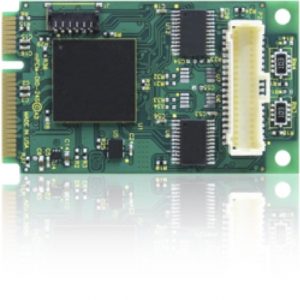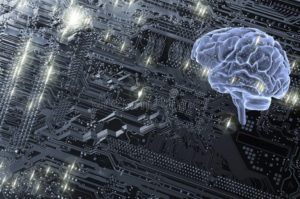
The future of AI and the embedded system
By Gil Ben-Dov, CEO, Total Phase Inc.
Automation / Robotics Electronics Embedded Systems Engineering Supply Chain AI artificial intelligence artificial intelligence embedded systems embedded systemsEmbedded systems help AI programs to interact with the physical world around them, serving as an important part of preparing for or developing new innovations
Artificial intelligence, or AI, is one of the most controversial and thought-provoking topics in the world of technology today. Given the potential AI offers and the problems it can solve, the attention is certainly warranted. However, one of the topics that is often overlooked is the role embedded systems will play as the businesses continue to adopt and implement AI. 
While AI programs help businesses make better decisions and automate processes, embedded systems help AI programs to interact with the physical world around them. This makes understanding how these two powerful platforms interact with one another an important part of preparing for, or even developing, the innovations to come.
In this piece, we will explore AI, the role embedded systems play, some real-world use cases, and discuss some helpful tools for developing embedded systems for AI applications.
What is AI?
The Merriam-Webster dictionary definition of artificial intelligence is “a branch of computer science dealing with the simulation of intelligent behavior in computers”. For a computer program to be considered an AI program, it should be able to analyze data inputs and make rational, intelligent decisions based on those inputs. As it gathers more data points, an AI program should be able to learn and make better decisions.

Oftentimes the media gets caught up in the sensationalized stories of AI leading to machines rising to world domination (e.g. Skynet from the Terminator films) or focuses on the impressive but somewhat novel achievements of AI like AlphaGo defeating a Go world champion or IBM’s Watson besting human contestants on the popular Jeopardy! game show.
This can lead to us missing out on the practical use cases for AI that exist today, such as Nest’s learning thermostat that can program itself and “learn” how to save consumers money on their energy bills or Amazon’s Alexa an intelligent personal assistant program. Innovations like these give us a great way to conceptualize exactly what AI can do: enable computer programs to learn and iterate based on data inputs.
What role do embedded systems play?
Embedded systems are often overlooked when discussing artificial intelligence. AI is a more flashy and headline-grabbing topic, but in a large number of scenarios, embedded systems are required to make AI useful. When you consider the role of data inputs in enabling AI and the benefits of AI being able to interact with the physical world, the importance of embedded systems becomes clear.
While AI can take data and “learn” from it to make better decisions, the Internet of Things (IoT) and embedded systems are the physical devices that generate the data required to achieve useful functionality.
The more data an AI system has, the better the outcomes it can produce. Since embedded systems are near ubiquitous in modern society, they are an ideal source of data inputs. To provide just a few examples:
Almost every adult has a smartphone and other mobile devices they use on a regular basis.
Automobiles have built-in GPS systems and cameras.
Smart homes have a variety of intelligent consumer electronics like the Samsung smart refrigerator.
The movement towards smart cities is creating more connected urban environments.
Health conscious individuals are using smart heart rate monitors and fitness trackers to better understand their health.
All these devices are capable of capturing and reporting data that can then be fed to an AI system for analysis. For example, an AI program designed to help users make healthier decisions could aggregate and analyze inputs from fitness trackers and then take what it learns over time to optimize its recommendations. However, this would not be possible without the embedded device that captures the data in the first place.
Similarly, to enable automation of processes that involve physical devices (e.g. controlling the lights in a smart home, starting or stopping a production line in a factory, etc) artificial intelligence programs need to be able to control embedded systems. 
Use cases for AI
Now that we have established what artificial intelligence is and the role embedded systems play, we will dive into some real-world use cases for AI.
Analytics
Analytics is one of the ideal use cases for artificial intelligence. Over the past decade, the firms have embraced “big data” and amassed a wealth of data that can be processed by AI programs to provide useful information. We are all familiar with the stories of Netflix, Amazon, and Google using AI to provide custom recommendations based on what they have been able to learn about consumers using AI and machine learning. However, not everyone is aware that similar benefits are available in fields like digital factories, energy management, and other industrial applications.
For example, consider MindSphere an AI solution from Siemens designed to improve analytics for industrial (and other) applications. MindSphere enables users to interface with a wide variety of devices to help improve the value chain of businesses in a wide variety of markets. A large part of what makes MindSphere so powerful is its ability to capture data from smart meters, programmable logic controllers (PLCs), and other devices common in industrial applications.
Smart cars
Smart cars are vehicles that provide some level of autonomous driving made possible by artificial intelligence. Some of the more basic forms of this type of AI, like vehicles with the ability to park themselves, have been on the market for years. Now we are beginning to see more and more automobile manufacturers beginning to offer more advanced autonomous driving features like the ability to control speed and steering for extended periods. These are what US News defines as “level 2” autonomous vehicles. While a fully autonomous “level 5” vehicle is not yet available, manufacturers like Cadillac, BMW, Telsa, Volvo, Audi, Toyota, and Honda all have “level 2” smart cars on the market or coming to market this year. Additionally, Waymo, which started as a Google project, is working towards making a “level 3” autonomous vehicle a reality for consumers in the near future.
Smart Manufacturing & Industry 4.0
Industry 4.0 is a hot topic in tech and is likely to make major waves across the globe over the next decade. This is demonstrated by news items like the mayor of Cincinnati, Ohio announcing the city will be an “Industry 4.0 Demonstration City” and TrendForce projecting that by 2020 investment in smart manufacturing will exceed $320 billion USD. AI platforms like Siemens MindSphere and General Electric’s Predix will provide the intelligence that drives the shift in manufacturing while a myriad of embedded devices and robotics will help these solutions interact with the physical world.
Tools for designing and debugging intelligent embedded systems
With the opportunities created by merging AI and embedded systems providing businesses with an excellent way to improve their value chain, it is important for developers to understand what tools are required to design and debug embedded systems. Host bus adapters (e.g. the Cheetah SPI Host Adapter) allow developers to develop embedded applications quickly and efficiently. Similarly, protocol analyzers (e.g. the Beagle USB 12 Protocol Analyzer) are vital to the development and debugging of embedded applications as they allow for report generation and data analysis.
Conclusion
As we move towards Industry 4.0, artificial intelligence and embedded systems will play a large part in shaping the landscape of technology over the next decade. These two platforms complement one another well and come together to create holistic solutions that solve real-world problems. Businesses that understand how to work with AI and develop intelligent embedded systems will be well positioned to take advantage of the many opportunities these technologies will create.
